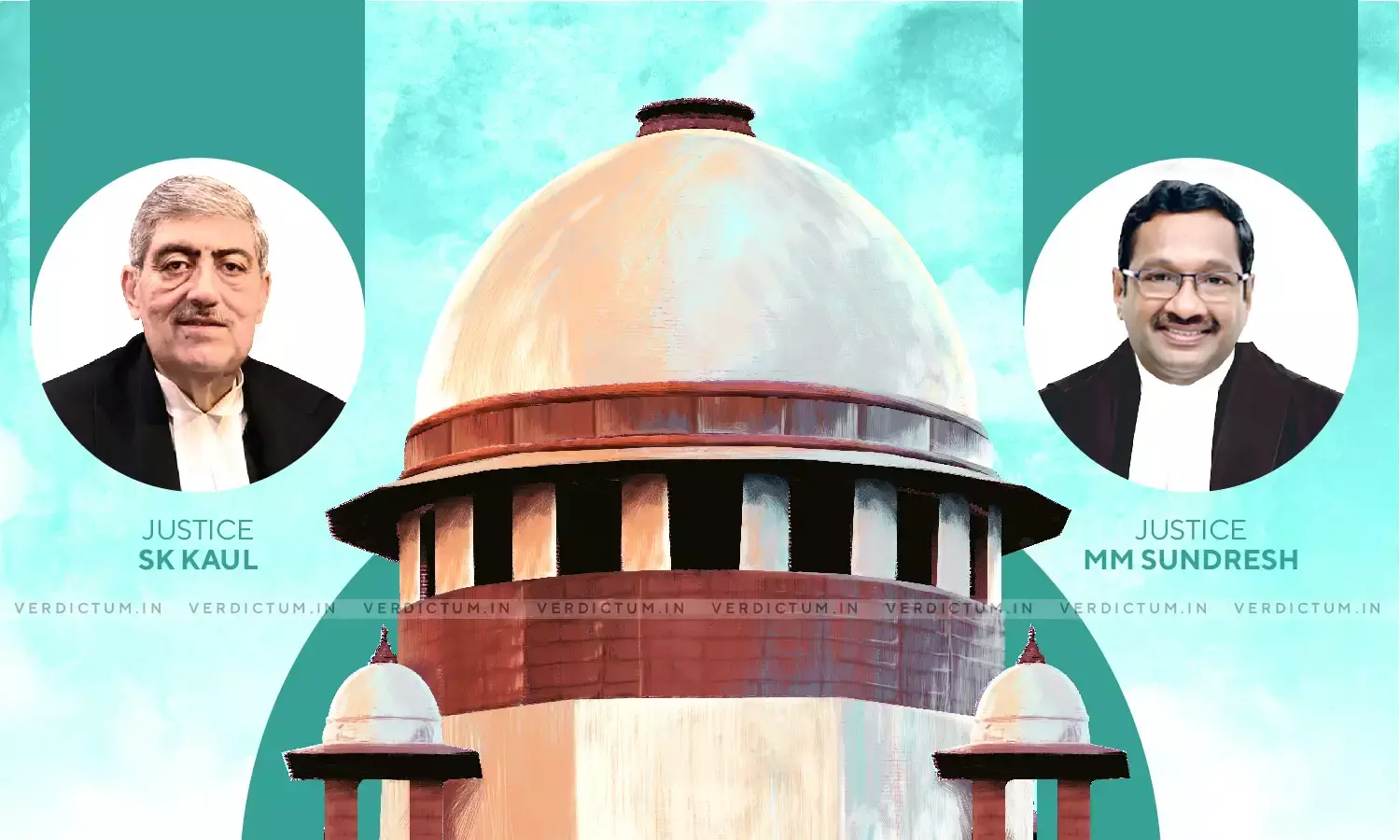Section 29A(h) IBC - Mere Existence Of Personal Guarantee Invoked By A Single Creditor Enough To Earn Disqualification: Supreme Court

A two-judge Bench of the Supreme Court comprising of Justice Sanjay Kishan Kaul and Justice M.M. Sundresh has held, "What is required to earn a disqualification under the said provision is a mere existence of a personal guarantee that stands invoked by a single creditor, notwithstanding the application being filed by any other creditor seeking initiation of the insolvency resolution process. This is subject to further compliance of invocation of the said personal guarantee by any other creditor."
The Court was called upon to interpret the provisions of Section 29A(h) of the Insolvency and Bankruptcy Code, 2016 [Code] as amended by Act 26 of 2018.
Mr. Tushar Mehta, SG, and Counsel Mr. Bishwajit Dubey appeared for the appellant while Mr. Ranjit Kumar and Mr. Parag Tripathi, Senior Advocates appeared on behalf of Respondents no. 1 and 3 respectively.
Respondent no. 1 i.e. MBL Infrastructures Limited was set up by one Anjanee Kumar Lakhotiya (Respondent no. 3). MBL obtained loans from a consortium of banks. MBL failed to act in tune with the terms of repayment and personal guarantees were invoked.
RBL Bank issued a notice U/s. 13(2) of the SARFAESI Act 2002. Other banks followed the course. RBL filed an application U/s 7 of the Code before NCLT to initiate Corporate Insolvency Resolution Process (CIRP) against MBL.
The petition was admitted, and an IRP was appointed leading to the moratorium. The duration of CIRP was extended by additional 90 days.
IBC Amendment Ordinance 2017 introduced Section 29A to the Code which was the subject matter of the present lis before the Court.
Respondent no. 3 filed an application praying for a declaration that he was not disqualified from submitting a resolution plan under 29A (c) and (h) of the Code. It was held that R3 was eligible to submit a plan notwithstanding that he did extend his personal guarantees on behalf of MBL. No specific findings were rendered by the adjudicating authority on the issue. This order was assailed by PNB before NCLAT. An interim order was passed.
Section 29A(h) went through a further amendment in the interregnum. The appeals preferred inter alia by the Appellant were dismissed on the ground that the resolution plan was approved with 78.50% of the voting share of the CoC and was backed by techno-economic report qua viability and feasibility.
The Court, at the outset, noted that focus was on avoiding any interpretation which might cause an injury or destroy the intent behind the legislation. The Court noted that the Code had a laudable object with an idea to facilitate a process of rehabilitation and revival of the corporate debtor with the active participation of the creditors.
On the scope of Section 29A(h), the Court made the following crucial observations:
"Section 29A(h) of the Code creates one more category of persons not being eligible to be a resolution applicant. Other than the persons mentioned thereunder, there may not be any disqualification. The word "person" is of a wider import to include a promoter or a director, as the case may be. The definition of "person" as mentioned under Section 3(23) of the Code includes certain categories of persons and thus, there is no such exclusion. It is merely illustrative/inclusive in nature and therefore, the persons mentioned in Section 29A alone are ineligible to be resolution applicants."
"Once a person executes a guarantee in favour of a creditor with respect to the credit facilities availed by a corporate debtor, and in a case where an application for insolvency resolution has been admitted, with the further fact of the said guarantee having been invoked, the bar qua eligibility would certainly come into play. What the provision requires is a guarantee in favour of 'a creditor'. Once an application for insolvency resolution is admitted on behalf of 'a creditor' then the process would be one of rem, and therefore, all creditors of the same class would have their respective rights at par with each other," the Bench opined.
The Court held that what was required to earn a disqualification was a mere existence of a person guarantee that stands invoked by a single creditor, notwithstanding the application being filed by any other creditor seeking initiation of the CIRP. The Court noted that there cannot be ineligibility qua one creditor as against others.
The Court, on the date of reckoning qua the provision, observed as follows:
"The resolution applicant has no role except to facilitate the process. If there is ineligibility which in turn prohibits the other stakeholders to proceed further and the amendment being in the nature of providing a better process, and that too in the interest of the creditors and the debtor, the same is required to be followed as against the provision that stood at an earlier point of time. Thus, a mere filing of the submission of a resolution plan has got no rationale, as it does not create any right in favour of a facilitator nor it can be extinguished. One cannot say, what is good today cannot be applied merely because an applicant was eligible to submit a resolution plan at an earlier point of time. It is only a part of procedural law."
On the question of limitation, the Court held that it was in agreement with the views expressed by the adjudicating authority as confirmed by NCLAT.
The Court noted that though the plan submitted by R3 is not maintainable, much water had flown. The Court noted that it had to take note of the interest of over 23,000 shareholders and thousands of employees of MBL.
Hence, in peculiar facts of the case, noting that no prejudice would be caused to dissenting creditors, the Court did not disturb the resolution plan leading to the ongoing operation of MBL. The appeals were accordingly disposed of.
Click here to read/download the Judgment

